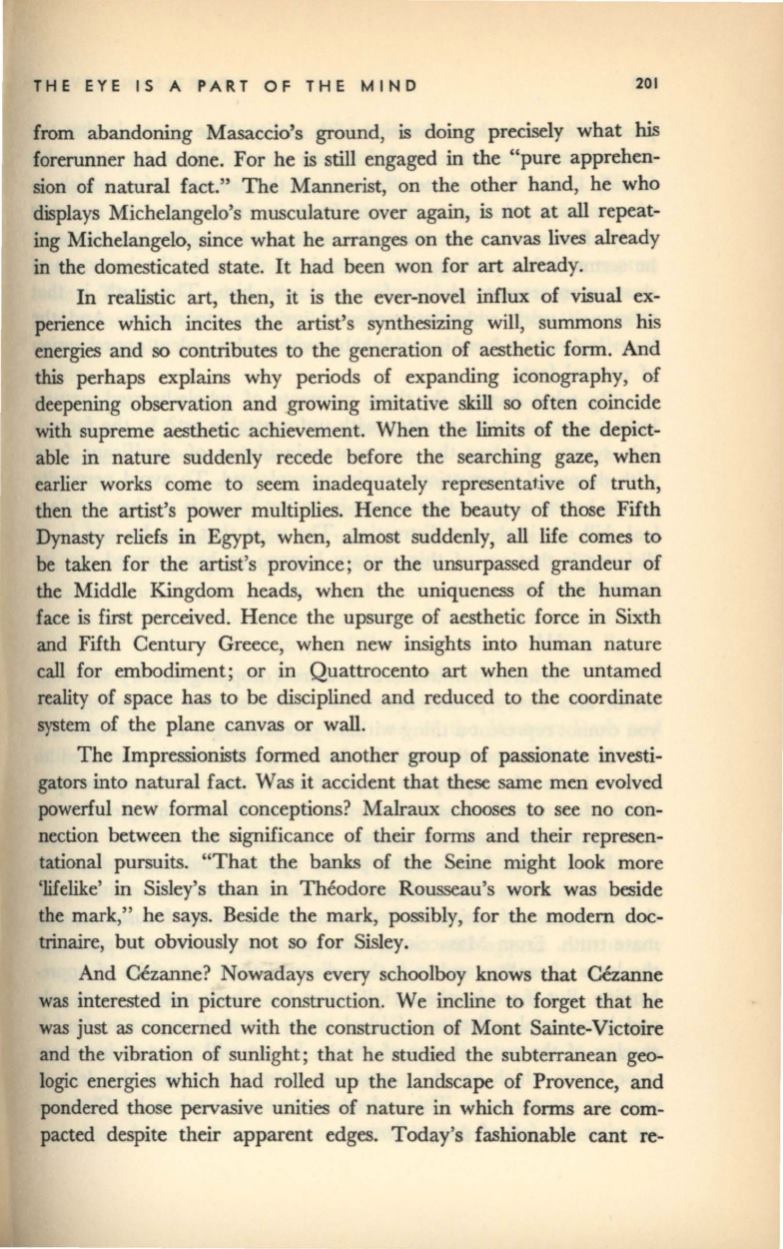
THE EYE IS A PART OF THE MIND
201
from abandoning Masaccio's ground, is doing precisely what his
forerunner had done. For he is still engaged in the "pure apprehen–
sion of natural fact." The Mannerist, on the other hand, he who
displays Michelangelo's musculature over again, is not at all repeat–
ing Michelangelo, since what he arranges on the canvas lives already
in the domesticated state. It had been won for art already.
In realistic
art,
then, it is the ever-novel influx of visual ex–
perience which incites the artist's synthesizing will, summons his
energies and so contributes to the generation of aesthetic form. And
this
perhaps explains why periods of expanding iconography, of
deepening observation and growing imitative skill so often coincide
with supreme aesthetic achievement. When the limits of the depict–
able in nature suddenly recede before the searching gaze, when
earlier works come to seem inadequately representative of truth,
then the artist's power multiplies. Hence the beauty of those Fifth
Dynasty reliefs in Egypt, when, almost suddenly, all life comes to
be taken for the artist's province; or the unsurpassed grandeur of
the Middle Kingdom heads, when the uniqueness of the human
face is first perceived. Hence the upsurge of aesthetic force in Sixth
and Fifth Century Greece, when new insights into human nature
call for embodiment; or in Quattrocento art when the untamed
reality of space has to be disciplined and reduced to the coordinate
system of the plane canvas or wall.
The Impressionists formed another group of passionate investi–
gators into natural fact. Was
it
accident that these same men evolved
powerful new formal conceptions? Malraux chooses to see no con–
nection between the significance of their forms and their represen–
tational pursuits. "That the banks of the Seine might look more
'lifelike' in Sisley'S than in Theodore Rousseau's work was beside
the mark," he says. Beside the mark, possibly, for the modern doc–
trinaire, but obviously not so for Sisley.
And Cezanne? Nowadays every schoolboy knows that cezanne
was interested in picture construction. We incline to forget that he
was just as concerned with the construction of Mont Sainte-Victoire
and the vibration of sunlight; that he studied the subterranean geo–
logic energies which had rolled up the landscape of Provence, and
pondered those pervasive unities of nature in which forms are com–
pacted despite their apparent edges. Today's fashionable cant re-


